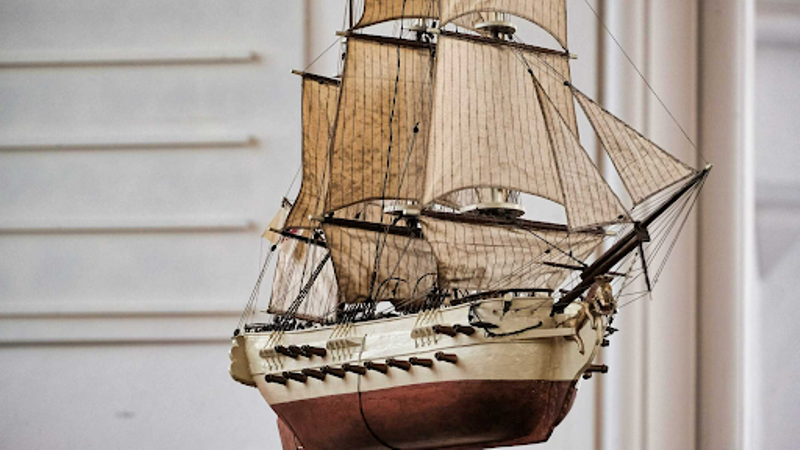
Planking Tips for Model Ship Building
One of the most iconic ships to sail the “seven seas” is the clipper. It may be one of the best model ship designs to undertake, with nearly two dozen sails and three masts.
You’ve spent hours meticulously making sure the rigging is correct, from the jib boom to the spanker boom topping lift. Something isn’t sitting right, and it’s taken days of staring at it to figure it out. Your planking just doesn’t look right.
Want to know how to fix it? Keep reading to find out the best planking tips that will get your project back on the high seas.
Why Bother with Planking Your Ship?
Adding quality planking to your ship is only one aspect of charm to consider. You can also add character to your ship build with LED lighting.
Touches like this give your ship warmth and authenticity that are difficult to achieve otherwise.
Without giving care and attention to the planks of your ship, it might as well be a flat panel you use. It will never look right or authentic without a “wooden” touch.
Develop Your Own Approach but Start from the Beginning

There are more ways than one to skin a cat and more than one to skin your ship with planks. It’s important to find your own skill, as ancient shipbuilders would have done. It’s also important to follow tried and true methods to grow on.
There are four steps that you should remember to achieve success with your planking.
- Hull preparation
- Plank bending
- Plank tapering
- Affixing the Plank
Preparing the Hull
Another way to say this is “fairing the hull.” When the hull is fair, you can start planking the hull.
To fair a hull, you must taper the false keel and be careful not to cut above your bearding line. Next, using some method of sanding — a Dremel or a woodblock with sanding paper (the method is up to you) — you’ll want to taper your sections according to your kit plans.
If you’re not sure you can carry out the rabbet line or recess at your current skill level, it’s not apparent that you’ve skipped the step on the finished process. If you’re going for historical accuracy, though, feel free to duplicate it.
When it comes to the bulkheads, it’s quite like beveling the keel through sanding. Dry assemble the bulkheads to the keel and check the amount of material you need to remove.
This is because every piece of cut wood is slightly different. It is (or was) a living thing and depending on various factors can change shape or size over time.
Using a temporary plank, you can pin it across the full length of the hull to check your fairing and bevel angles. If the bulkheads are too acutely beveled, they’ll be too loose or lumpy. It’s extremely difficult to fix after the fact.
These temporary battens will prove invaluable to creating a quality model, in the end.
Bending Planks
To get a true “apple” shaped bow or stern, you might need to use filler blocks. It’s best to “overfill” than have low spots you need to use wood fillers to fix.
This will help you to lay your planks down and glue them properly while you’re wrapping your planks down the length of the ship.
Wherever there is a gap the same width as a plank, you can use a full section stealer. Anywhere the plank naturally lies down where there’s a half-width gap you can use a half-section stealer plank.
Keep them at full length until you’re ready to install them. Stealers have about a 45° end-cut as they lap into the natural wrap position of the planks.
Move the stealer plank forward until it’s past the gap, but not covering more than half of the width of the plank.
This is true in opposite when you’re getting closer to the bow. There, instead of stealers, you’ll need to employ drop planks. Garboard planks should never curve upwards, or planks will be unduly crowded.
Tapering Your Planks

Obviously, to know how many stealers you’ll need and get to the point of wrapping your planks, you’ll need to know how wide they are. There are three major points to consider when tapering your planks.
Your kit may spec out plank sizes but should never be tapered below half their width.
Tapering should always be done on the top of the plank to ensure a straight fit on the bottom of another plank.
Every ship has a different way to determine plank width and its best to calculate.
Affixing the Planks to the Hull
While you’re tapering your plank only on the top, you’ll also only be giving it a bevel. Without a bevel, the plans will have a gap. You’ll also want to fit gunport frames before planking your hull.
Speaking of fitting frames, you’ll need to get familiar with fastening your planks onto the hull frames. Your planks should cover the length of between three and four hull frames.
The ends of each plank should only cover half of the width of each hull frame. Stealers, drop planks, and half-stealers are going to require extra attention. The last plank you’ll be able to glue is the last plank to be cut. To accomplish this, you’ll have to pin the planks you’ll cut to fit the stealer.
Last Thoughts
Fortunately, historical admiralty models were not fully planked, to show the framework of bulkheads underneath. This was to allow the admiralty to make decisions on ship models to be scaled up, making the actual ship.
If you’d like to make your ship an open-hulled admiralty model, feel free — you’ll even be historically accurate.
Painting and sealing the hull of your ship will help to keep both layers of your hull planking to stay intact for decades or even centuries to come. Consider not leaving it bare too long, as contact to atmospheric moisture can warp and twist wood.
Essential Planking Tips
It’s not easy to find planking tips that are general enough for every ship. All these ships, while following the tenets of the design, were all unique designs. They didn’t exactly have factory manufacturing processes, as we do today.
This taps into the fun and discovery that model shipbuilding affords us in the modern world. Did these planking tips help you get past your planking problems?
Keep browsing our articles to find out more about model ships and other lifestyle tips!




